Intel SSD 525 Review (240GB)
by Anand Lal Shimpi on January 30, 2013 1:42 AM ESTAnandTech Storage Bench 2011 - Light Workload
Our new light workload actually has more write operations than read operations. The split is as follows: 372,630 reads and 459,709 writes. The relatively close read/write ratio does better mimic a typical light workload (although even lighter workloads would be far more read centric).
The I/O breakdown is similar to the heavy workload at small IOs, however you'll notice that there are far fewer large IO transfers:
| AnandTech Storage Bench 2011 - Light Workload IO Breakdown | ||||
| IO Size | % of Total | |||
| 4KB | 27% | |||
| 16KB | 8% | |||
| 32KB | 6% | |||
| 64KB | 5% | |||
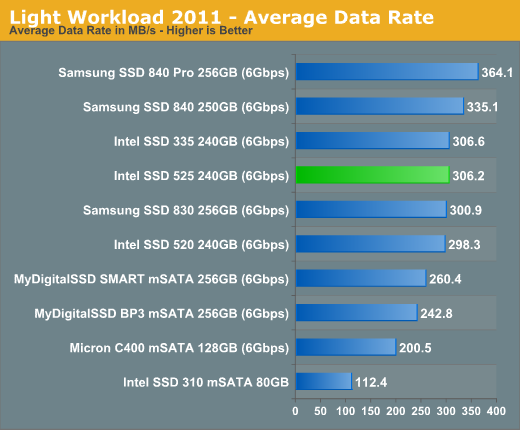
There's a smaller improvement over the 520 in our light workload. The 525 isn't really supposed to be faster than the 520, just available in a smaller form factor - any performance advantage is simply icing on the cake.
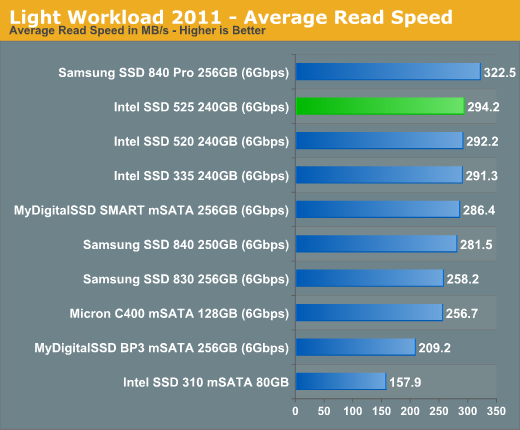
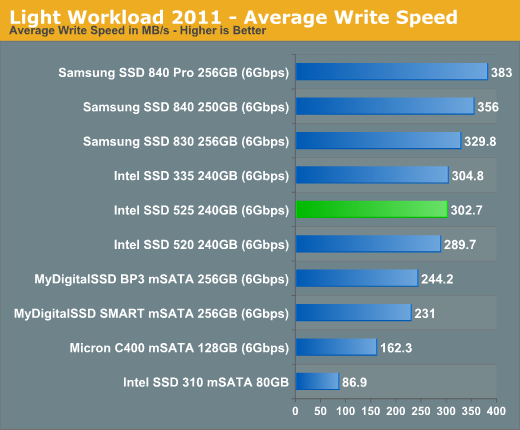
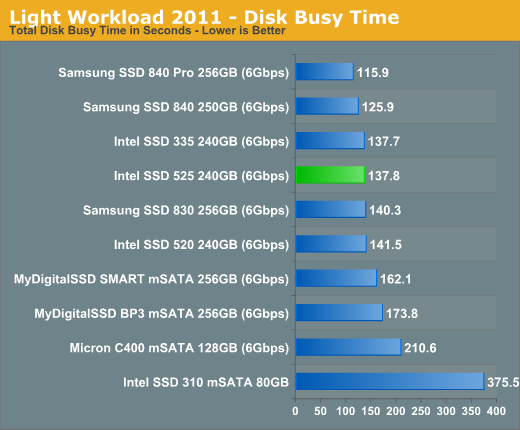
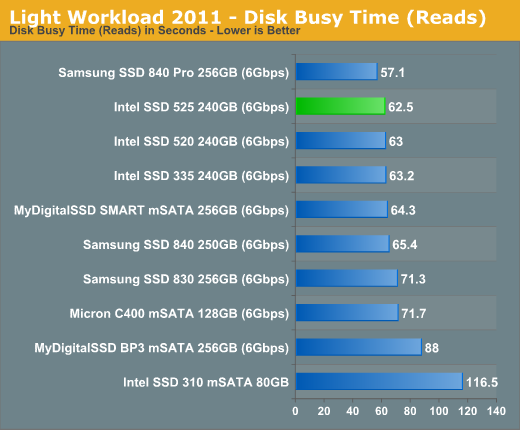
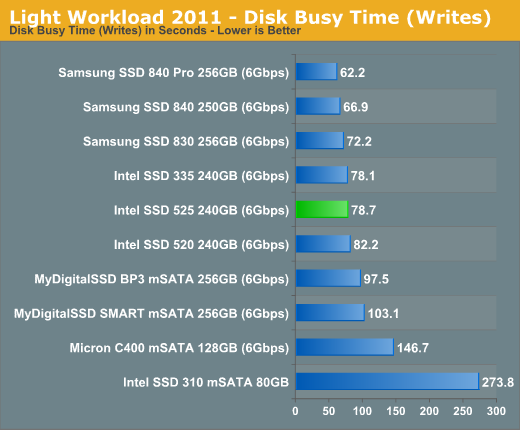










21 Comments
View All Comments
vcorem - Wednesday, January 30, 2013 - link
http://m.tomshardware.com/news/Mushkin-480GB-mSATA...IanCutress - Wednesday, January 30, 2013 - link
Mushkin uses a stacked daughter board to achieve 480GB. This is usually ok in a motherboard, but not in a z-height limited mobile device. While it's still electrically mSATA, it is technically outside the mSATA specifications which limit z-height (if I recall correctly).lukarak - Wednesday, January 30, 2013 - link
What is the chip density in the 768 GB SSD board in a rMBP? Does it have 12?Kristian Vättö - Wednesday, January 30, 2013 - link
Yup, the 768GB SSD in rMBP has twelve 64GB (8x8GB) packages.However, SandForce has much stricter restrictions, the SF-2281/2 can only access up to 64 NAND dies (that's up to 512GB with 8GB dies). Samsung could build a 1TB drive if they wanted to, they just don't see the market for it (yet).
lukarak - Wednesday, January 30, 2013 - link
Thanks for the answer.On a slightly related note, the iPad (late 2012) 16 GB, has a single NAND chip, as could be seen in the teardowns, and there doesn't seem to be any room for more. Do you perhaps know, or care to speculate, how the higher capacity ones are configured, especially the new 128 GB version?
Kristian Vättö - Wednesday, January 30, 2013 - link
The 128GB model is most likely using new 128Gb (16GB) NAND dies to enable the higher capacity. You can only stack up to eight dies in a single package, so a higher capacity die was needed before you could go over 64GB (8x 16GB is 128GB).At least Samsung and IMFT have 128Gb dies in production but they most likely weren't available in volume when the iPad 4 was initially launched, hence the delay.
lukarak - Wednesday, January 30, 2013 - link
Makes sense, thanks for the insight.SAMSAMHA - Wednesday, January 30, 2013 - link
hi, AnandI am curious what board are you using to test this since none of the desktop board with mSATA that I know has SATA 6Gbps interface.
SodaAnt - Wednesday, January 30, 2013 - link
There are msata to sata conversion boards that work fine because msata and sata are electrically the same.Meaker10 - Wednesday, January 30, 2013 - link
The msi gt60 can ship with a pair of msata gen3 slots configurable in raid.